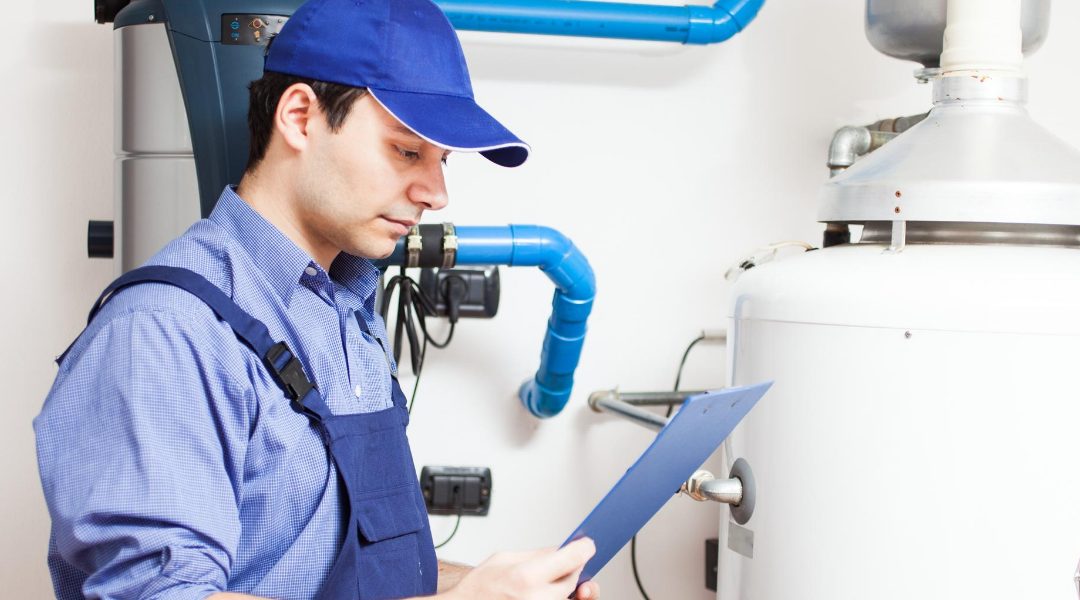Proper water heater maintenance is a very common task overlooked in most households. Hot water heaters left without regular maintenance have lowered energy efficiency, have a shorter life span and can build up deposits of potentially dangerous contaminants. Tankless Experts wants to share a checklist of regular hot water heater maintenance tasks everyone should mark off their list.
- Flush Water Heater
- Adjust Water Temperature
- Check Valves and Connections for Leaks
- Insulate Pipes
- Have Your Unit Serviced
- Clear Area Around the Water Heater
- Set to Low Power Mode
Following these tips will reduce utility bills and protect your house and hot water heater from damage.
The type of water heater you own has a lot to do with what tasks you should perform regularly. Tankless Experts specializes in the installation and maintenance of tankless water heaters, but we will be covering tips for both within this article. We hope to help anyone live a safer and happier life with a properly maintained hot water heater.
Flush Water Heater
Hot water tanks can collect sediments and mineral buildup over time. Flushing your water heater tank every 6 months is crucial to prevent this build-up which can raise energy costs, increase your home’s water hardness and reduce the life of your conventional tank water heater. This task can be done by yourself, however like all other home service tasks, a professional may be required depending on your comfortability or severity of the job.
In order to flush your hot water tank, there is a 3 step process everyone should follow.
- Turn off the power and water connected to your hot water heater. If electric, you can turn off the breaker assigned to the appliance. For gas, close off the fuel line connected to your water heater tank.
- Locate the tank drain valve located near the base of your hot water tank and connect a standard water hose. Place the opposite end of said water hose into a bucket to drain or over a floor drain.
- Allow the tank to drain completely for 20-25 mins. After all the water has successfully drained, flush the tank by reopening the water connected to your system and allow to flow until the water is clear of sediments and colour.
Adjust Water Temperature
The ideal temperature of your hot water heater is an entirely personal preference, however, we strongly suggest adjusting your temperature to maintain around 120 degrees Fahrenheit or 50 degrees Celcius. This temperature will ensure your home’s water will be adequate for any cleaning or bathing while keeping the water at a temperature that is safe for you. Water heated to this temperature has been found to be the most energy efficient while helping to ensure a long life for your hot water system,
Check Valves and Connections for Leaks
Water damage can be detrimental to your home. It can cause structural damage as well as lead to mould/mildew growth. Most of our hot water systems reside in areas of our home we do not frequent, so leaks can go for long periods of time unnoticed. This is why regularly checking all water valves and connections of your hot water system is important. You can avoid costly house repairs and spiked utility bills from water leaks.
Insulate Pipes
Depending on the climate you live in, insulating your home’s water pipes can make a huge impact on the temperature of the hot water in your home. You can save large amounts of hot water by having the water being used protected from heat loss as it travels from your hot water heater to the place you are using it. This lowered usage will reduce the strain on your water system and be more energy efficient.
Have Your Unit Serviced
We cannot be experts in everything. We recommend having both conventional tank water heaters and tankless water heaters serviced by a professional every couple of years. Regular maintenance and small repairs can be done by yourself, but small warning signs can go overlooked by the untrained eye. Having a professional opinion on the health and safety fo your water system can save you from expensive repairs or even replacements.
Clear Area Around the Water Heater
Clearing space around your water heater is more important for homes with a traditional tank system, but still should be considered with a tankless water heater. Giving your system room to breathe prevents the unit from overheating or even potentially causing a fire. The average space allotted for a water heater is roughly 2 feet in any direction. This is much easier with a tankless system due to its smaller size.
Set to Lower Power Mode
When going away for an extended period, you should consider placing your water heater in a suspended state. Most modern units have a low power mode which will reduce the energy consumption of the unit while you are away. This will protect your home from any accidents, lower energy costs and extend the life of your hot water system.
When it comes to finding the right tankless water heater solution for your situation, trust the industry leaders. Tankless Experts is dedicated to offering informed advice, an affordable water heater option, and solutions based on your unique needs. We carry and service various types of tankless water heaters capable of covering and size room or home. Contact us today for more information and a free, no-obligation estimate!

